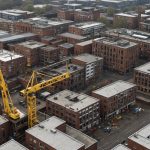Becoming a homeowner is an exciting milestone, especially in the diverse and dynamic housing market of the UK. However, beyond the initial thrill of owning a house, there lies a significant responsibility: managing ongoing maintenance costs. These expenses can often catch buyers off guard, turning the dream of homeownership into a financial burden if not properly planned. In this comprehensive guide, we aim to equip new homeowners with the knowledge and strategies to effectively create a budget for property maintenance, ensuring their homes remain in top condition without breaking the bank.
Understanding Property Maintenance Costs
Owning a home isn’t just about paying off a mortgage. It’s also about investing time and resources in maintaining that investment. Maintenance costs encompass a broad range of issues, from everyday repairs to unexpected emergencies. Understanding these costs is crucial for any homeowner looking to protect their property value and enjoy a well-functioning home.
Also read : What are the potential pitfalls of purchasing a leasehold property in the UK?
Breakdown of Average Costs
The maintenance expenses of a house can vary significantly depending on factors such as the age of the property, location, and size. However, a general rule of thumb is to allocate about 1% to 4% of the property value annually for maintenance. For instance, a home valued at £250,000 would typically require £2,500 to £10,000 set aside each year.
Types of Maintenance Costs
-
Routine Maintenance: Includes regular tasks like lawn care, gutter cleaning, and servicing heating systems. These are predictable and can often be budgeted for in advance.
Also to read : What are the best methods for financing renovations on a property in the UK?
-
Preventative Maintenance: Involves inspections and small repairs to prevent more significant issues. For example, sealing roof leaks before they become a major problem.
-
Emergency Repairs: Unexpected issues such as plumbing failures or electrical problems that often come with hefty costs if not addressed immediately.
The Impact of Neglect
Ignoring maintenance costs can lead to more substantial repair bills down the line. Regular upkeep not only saves money but also extends the life of the property. It’s a proactive approach that every responsible homeowner should prioritize.
Setting a Realistic Maintenance Budget
Creating a realistic budget for home maintenance involves several steps that require careful planning and foresight. Understanding where to allocate resources can make the difference between a well-maintained home and a neglected one.
Analyse Your Current Financial Situation
Start by evaluating your current budget to determine how much you can allocate towards maintenance. Consider all income sources, ongoing costs, and any potential increases in expenses in the near future.
Predict and Plan for Future Costs
While it’s impossible to predict every emergency repair, you can estimate costs based on historical data or by consulting with professionals. Regular inspections by electricians, plumbers, and other experts can help identify potential issues before they escalate.
Create a Maintenance Savings Fund
Setting aside a small portion of your income each month can significantly ease the financial burden of unexpected repairs. Consider opening a separate savings account specifically for home maintenance. This ensures that funds are readily available when needed, preventing the need to dip into other savings or take on debt.
Leverage Technology
Various apps and software can help you track maintenance tasks, remind you of upcoming repairs, and even estimate costs. Using technology can streamline your budget planning, ensuring you stay on top of property maintenance without stress.
Common Maintenance Traps to Avoid
Navigating the responsibilities of homeownership can be challenging, and new buyers often find themselves falling into common maintenance pitfalls. Recognizing and avoiding these traps can save significant time and money.
Overlooking Small Repairs
Minor issues, such as leaky taps or cracked tiles, are easy to ignore when they don’t seem to impact daily life. However, neglecting these small repairs can lead to more extensive damage over time, resulting in higher costs.
Misunderstanding DIY Limitations
While DIY projects can be a great way to save money, there’s a fine line between handling small tasks and tackling complex repairs. Attempting repairs beyond your skill set can exacerbate issues and lead to higher professional repair costs.
Failing to Schedule Regular Inspections
Routine inspections are essential for identifying potential problems before they become larger issues. Skipping these inspections can lead to unanticipated expenses that could have been avoided.
Neglecting Seasonal Maintenance
Each season brings unique challenges that require attention. Failing to prepare your home for seasonal changes can result in property damage, whether it’s frozen pipes in winter or roof leaks in rainy months.
Ignoring Energy Efficiency Improvements
Investing in energy-efficient upgrades not only reduces utility bills but also can prevent wear and tear on systems like HVAC. Ignoring these improvements can lead to higher maintenance costs in the long run.
How the Property Market Influences Your Budget
The broader property market can significantly impact how homeowners should approach their maintenance budget. Staying informed about market trends allows you to strategically allocate your resources and make informed decisions about your home.
Regional Variations
Maintenance costs can vary widely across the UK, influenced by regional economic conditions, local regulations, and market demand. Homeowners in metropolitan areas might face higher costs, while rural areas might offer more affordability in terms of labor and materials.
Property Value Fluctuations
During periods of market growth, homeowners may find their property values rising, which could justify increased maintenance spending to enhance long-term value. Conversely, in a declining market, cautious spending and prioritizing essential repairs might be more prudent.
Impact of Current Events
News events, such as changes in government housing policies or economic shifts, can affect maintenance costs. Keeping abreast of these developments ensures you’re not caught off guard by unexpected changes in costs.
Balancing Aesthetics and Practicality
While it’s important to maintain your home‘s aesthetic appeal, practical maintenance should always take priority. Understanding your budget limitations and the current market can guide you in making decisions that balance both functional and visual improvements.
In conclusion, creating a comprehensive budget for ongoing property maintenance is a vital aspect of responsible homeownership. By understanding the scope of maintenance costs, setting realistic budgets, avoiding common pitfalls, and considering the influence of the market, new homeowners in the UK can ensure their homes remain a source of pride and comfort rather than stress and financial strain. With careful planning and a proactive approach, you can enjoy the many benefits of your home while safeguarding your financial savings for years to come.











